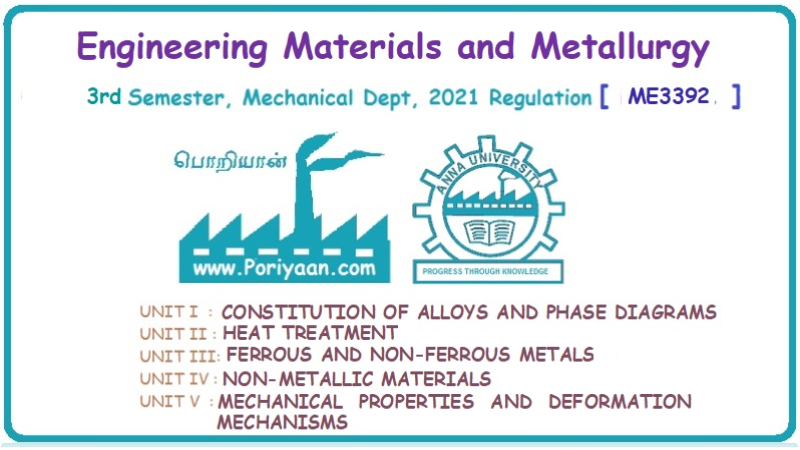Engineering Materials and Metallurgy: Unit II: Heat Treatment
Self-Assessment Questions
Heat Treatment | Engineering Materials and Metallurgy
Self-Assessment Questions: Heat Treatment - Engineering Materials and Metallurgy
SELF-ASSESSMENT QUESTIONS SHORT ANSWER TYPE QUESTIONS On Introduction to Heat Treatment 1. Define the term 'heat treatment'. 2. Why are the steels heat treated? 3. What are the purposes of the processing heat treatments? 4. List the. various stages of a heat treatment process. On Various Heat Treatment Processes 5. List some of the important heat treatment operations widely used. 6. What is meant by annealing? What are the purposes of it? 7. Define the following terms: (a) Full annealing, (b) Process annealing, (c) Stress relief annealing, (d) Recrystallisation annealing, and (e) Spheroidise annealing. 8. What is meant by normalising? 9. Differentiate between normalising and full annealing. 10. Distinguish between full annealing and process annealing. 11. What is quenching? List some of the quenching medium generally used in industries. 12. What are the factors should be considered while selecting a quenching medium? 13. What are the three stages of quenching? 14. Rate the order of effectiveness of the following quench media: oil, brine, water, and molten salt. 15. What does the term hardening refer? What are the factors affecting the hardness? 16. Distinguish the work hardening with the age hardening process. 17. What is tempering? What are the objectives of performing it? 18. What is the effect of: (a) tempering temperature on the hardness of steels, and (b) tempering time on the hardness of steels. 19. What do you mean by temper embrittlement? 20. What is martempering and austempering? 21. What is meant by hardenability? What are the factors affecting it? 22. What is the difference between hardness and hardenability? 23. What is the benefit of the Jominy end-quench test? 24. What are hardenability curves? What are the uses of them? On TTT and CCT Diagrams 25. What is a TTT diagram? 26. What is the difference between TTT diagram and iron-carbon equilibrium diagram? 27. What is the significance of TTT diagram in the heat treatment of steel? 28. Why are TTT diagrams usually not applicable to industrial engineering practices? 29. What is a CCT diagram? 30. Dèfine the term critical cooling rate. What are the factors affecting it? 31. What is significance of the critical cooling rate? On Case Hardening 32. What do you mean by the term case hardening? 33. List some of the surface-hardening techniques employed for altering surface chemistry. 34. What are the differences between surface hardening by diffusion methods and thermal methods? 35. Define the following surface-hardening processes: (I) Carburising, (b) Nitriding, (c) Cyaniding, and (d) Carbonitriding. 36. Differentiate between pack carburising and gas carburising. 37. In what ways, cyaniding differs from carburising? 38. What is meant by selective hardening technique? 39. What are some selective heating techniques employed for surface hardening? 40. In what ways, flame hardening differs from induction hardening?
Engineering Materials and Metallurgy: Unit II: Heat Treatment : Tag: : Heat Treatment | Engineering Materials and Metallurgy - Self-Assessment Questions
Related Topics
Related Subjects
Engineering Materials and Metallurgy
ME3392 3rd semester Mechanical Dept | 2021 Regulation | 3rd Semester Mechanical Dept 2021 Regulation
